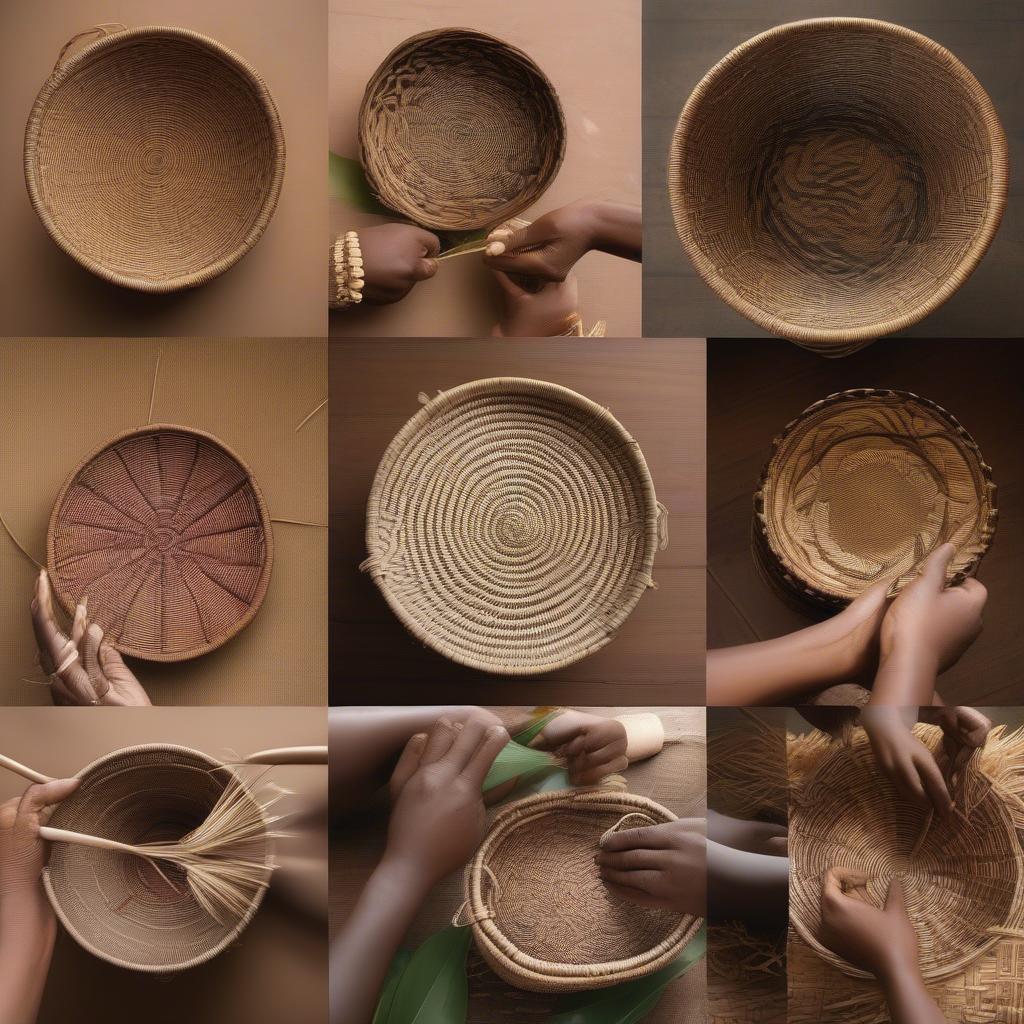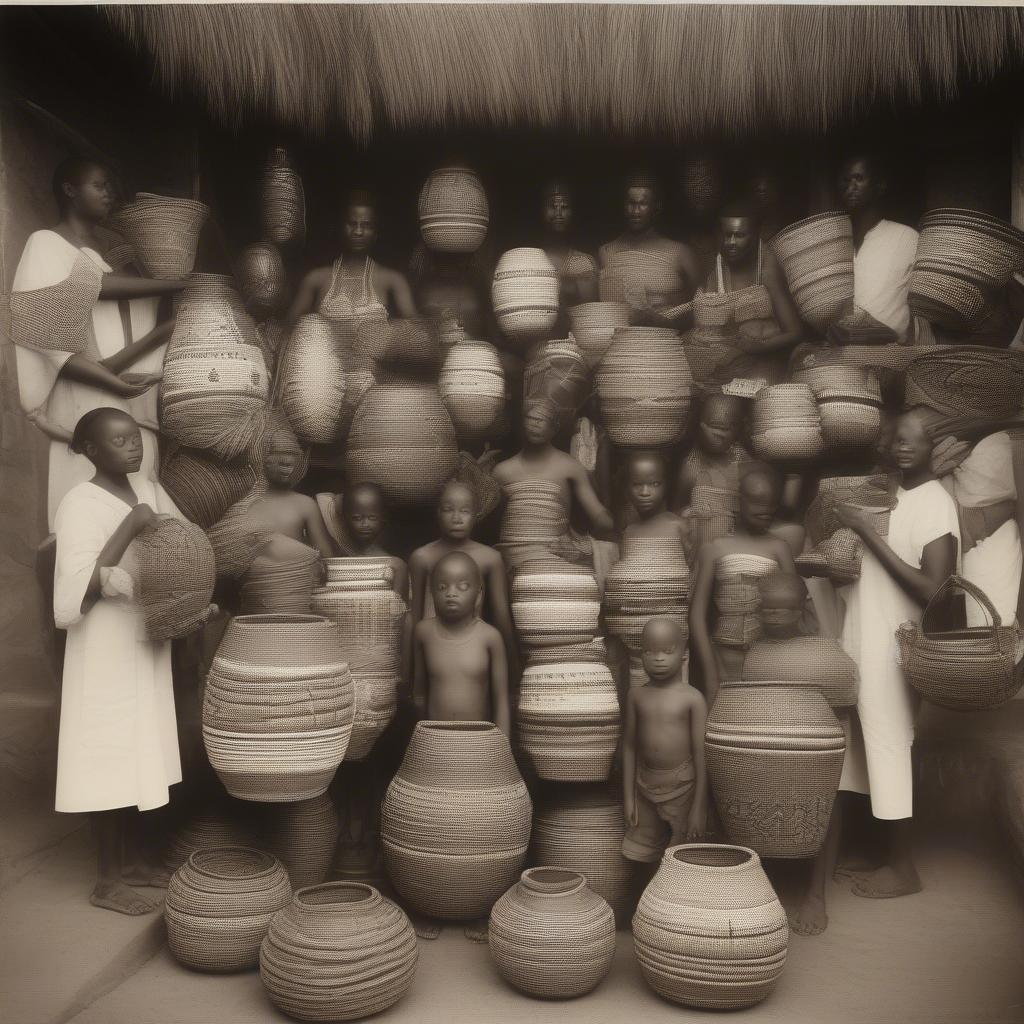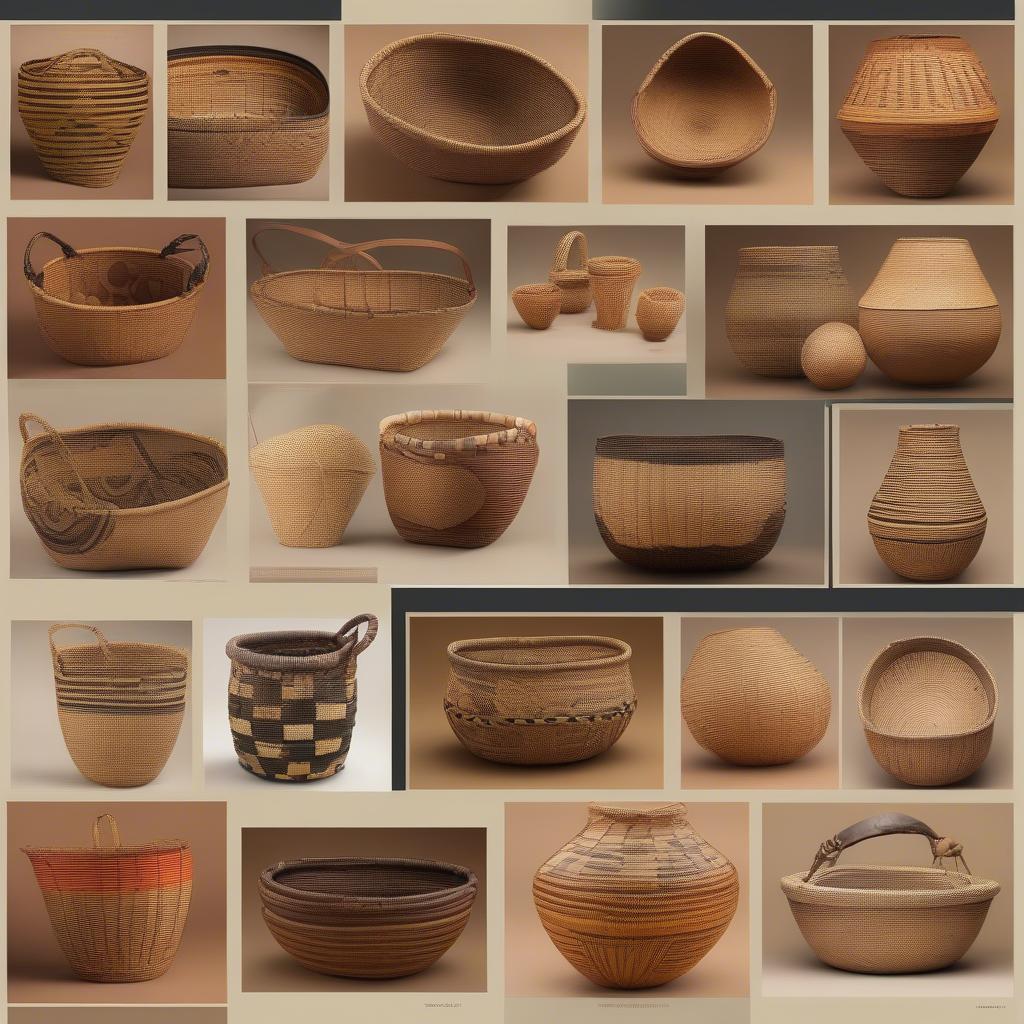Basket Weaving
About Traditional African Basket Weaving
Traditional African basket weaving is more than just a craft; it’s a rich tapestry of cultural heritage, artistic expression, and practical ingenuity. For centuries, communities across the African continent have woven intricate baskets, each telling a unique story through its materials, patterns, and techniques. These baskets are not merely functional objects; they are vessels of history, symbols of identity, and testaments to the enduring power of human creativity. This article delves into the captivating world of traditional African basket weaving, exploring its diverse forms, cultural significance, and the enduring legacy it carries.
 Traditional African Basket Weaving Techniques in Action
Traditional African Basket Weaving Techniques in Action
The Significance of African Basket Weaving
Basket weaving in Africa is deeply intertwined with daily life, serving both practical and ceremonial purposes. Baskets are used for storage, transportation, fishing, and even as currency in some cultures. They play crucial roles in agriculture, trade, and social rituals, reflecting the close relationship between people and their environment. The choice of materials, the intricacy of the designs, and the specific shapes of the baskets often hold symbolic meanings, communicating cultural values, social status, and spiritual beliefs. charleston sweetgrass basket weaving demonstrates a similar connection between craft and culture, albeit in a different geographical context.
 African Baskets Used in Cultural Ceremonies
African Baskets Used in Cultural Ceremonies
Materials and Techniques in Traditional African Basket Weaving
Traditional African basket weavers utilize a wide array of locally sourced materials, including grasses, reeds, palm leaves, bark, and even recycled plastics. The specific materials employed often reflect the regional environment and available resources. african basket weaving materials offers a more in-depth look at the diverse materials used. Weaving techniques vary significantly across different regions and ethnic groups, resulting in a stunning diversity of basket styles and patterns. Some techniques involve coiling, twining, and plaiting, each requiring a high level of skill and precision.
Exploring Regional Variations in African Basketry
From the tightly woven Ilala palm baskets of Zulu communities to the colorful Bolga baskets of Ghana, each region boasts its own distinctive basket weaving traditions. These variations reflect not only the availability of materials but also the unique cultural narratives embedded within each design. dyed reeds for basket weaving illustrates how color can further enhance the artistry and cultural expression in basketry. The patterns woven into the baskets often represent ancestral stories, clan symbols, or depictions of the natural world, serving as visual narratives passed down through generations.
 Regional Variations in African Basket Designs
Regional Variations in African Basket Designs
Preserving the Legacy of Traditional African Basket Weaving
In a rapidly changing world, preserving the legacy of traditional African basket weaving faces challenges such as globalization and the influx of mass-produced goods. However, there is a growing movement to support and celebrate these ancient crafts. Many artisans are finding innovative ways to adapt their skills to contemporary markets while staying true to their cultural heritage. Organizations and initiatives are working to provide training and resources to ensure that these invaluable skills continue to thrive. The connection between basket weaving and cultural identity is further explored in basket weaving cultural identity. For those interested in how weaving patterns can be incorporated into other art forms, basket pattern weave hair provides some fascinating examples.
“Traditional African basket weaving is not just a craft, it’s a living history,” says Abena Osei, a renowned Ghanaian basket weaver. “Each basket holds the stories of our ancestors, woven into the very fabric of its being.” Another expert, Dr. Khadija Mbaye, a Senegalese anthropologist specializing in African art, adds, “These baskets are tangible representations of cultural knowledge, passed down through generations, connecting us to our roots and shaping our future.”
In conclusion, traditional African basket weaving is a vibrant and dynamic art form that continues to evolve while preserving its deep cultural roots. It’s a testament to human creativity, ingenuity, and the enduring power of tradition. By appreciating and supporting these crafts, we contribute to the preservation of a rich cultural heritage for generations to come.
FAQ
- What are some common materials used in traditional African basket weaving? Common materials include grasses, reeds, palm leaves, and various types of bark.
- Where can I purchase authentic African baskets? Fair trade organizations and online marketplaces specializing in handcrafted goods are excellent resources.
- How can I learn more about African basket weaving techniques? Workshops, online tutorials, and books dedicated to the subject are available.
Need assistance? Contact our Hotline: +84 388 951 999, or visit our offices in Hanoi, Vietnam, or Tech Avenue, Suite 12, San Francisco, CA 94105, USA. Our customer service team is available 24/7.
